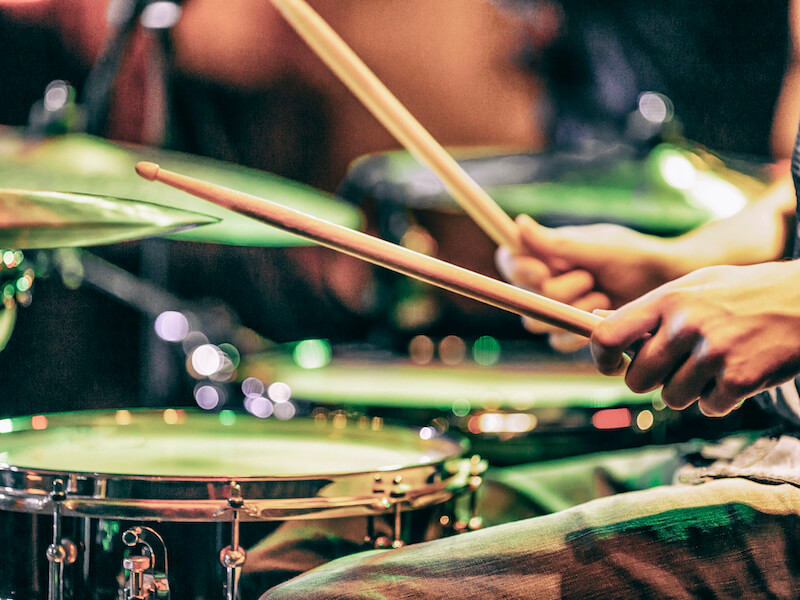
Musicians are cool! Their songs bring us so much happiness. The downside is that music is almost always loud, in fact, many people like it better that way. The musicians themselves are at an increased danger of hearing damage since they are subjected to loud music just about every day.
Whether your living depends on music or not, you’ll still want to be able to hear your favorite songs when you’re pushing 60, 70, or 80. For musicians, preserving their hearing is the key to a lengthy and successful career. Hearing protection is also key to a lifetime of musical enjoyment for everyone.
Sometimes it can be surprising how loud music can get
If you ask most people if a jet engine is loud, they’ll likely say yes.
Is music really that loud? People might not be so quick to answer that question if you ask them if a violin or acoustic guitar is loud. Imagine their surprise when they discover the reality: That can also be loud music! Even classical music can get to fairly high volumes that can easily harm your hearing.
A violin, for instance, can produce sounds well over 90 dB. That’s about as noisy as a leaf blower. In Europe, for instance, they have laws that require ear protection for anybody who works in a work environment where there is noise louder than 85 dB.
And if you’re working with music day in and day out, constant exposure to that kind of volume, particularly without hearing protection, can severely damage your hearing over time.
Can you protect your ears from noise damage?
Okay, musicians who want to keep their hearing for years to come need to safeguard their ears. So what can musicians do to safeguard their hearing and still enjoy the music they love so much?
Well, here are a couple of simple things musicians can do:
- Take breaks: Your ears are like any other part of your body: they can be overworked and will frequently benefit from a break. So take regular breaks from the noise. By doing this, noises won’t overpower and harm your ears. Regarding hearing, how long you’re exposed is nearly as important as how high the volume is. Taking breaks can be the difference between just the right amount of stimulation and too much!
- Track your volume: Everyone remembers the old saying “knowledge is power”. So knowing volume levels of sounds around you will help you protect your hearing. Sometimes, this is as simple as keeping track of your volume settings on amps and receivers. But you can also invest in a decibel meter app for your cellphone to make it convenient to monitor the real-world volume levels your ears are encountering from day-to-day. If the meter reads above 85dB regularly, you’ll need to address this.
hearing protection is important
Using ear protection is the number one most effective way to safeguard your hearing. Many musicians are hesitant to use hearing protection because they’re worried it will effect the clarity of sound they hear, as well as dampening the volume. That’s not always true, depending on which type of hearing protection you choose.
- Ear plugs made primarily for musicians: Disposable earplugs are something that’s most likely very familiar to most people. They don’t always fit comfortably, but they do reliably stop a lot of sound. They’re inexpensive, easy to come by, and easy to throw away. For musicians, they aren’t an ideal solution. But earplugs made just for musicians are also available for a little more money. A special material and state-of-the-art engineering are used to help these earplugs fit snuggly in the ear and decrease external noise by around 20% while maintaining the audio fidelity. This solution is perfect for musicians who need a light to moderate level of protection (and who don’t have a ton of money to invest in earplugs, or are likely to lose them).
- Electronic earplugs: Electronic earplugs work in basically the same way as high-quality, non-electronic earplugs. The earplug itself will block out the majority of the sound. What you hear will instead be routed in by the earplug itself. This solution is perfect for those who work in particularly noisy settings, and who want more options in terms of controlling volume.
- In-ear monitors: Most music is electronic now, or at least amplified by electronics. A device, known as an in-ear-monitor, is put inside of your ear and sends signals in electronically. The majority of monitors are small speakers that fit snugly and block out most sound while playing sounds you want to hear at safe volumes. This means you can hear exactly how you sound, at a volume you control. For musicians who electronically amplify their instruments these in-ear-monitors are the ideal solution.
Protect your career by protecting your hearing
It’s never too late to take steps to protect your ears, but it’s definitely a good idea to begin sooner rather than later. With options available at nearly every price point, there are simple ways for everyone to safeguard their hearing and their future. Don’t forget that you’re investing in your career by utilizing hearing protection for musicians. It’s one way to ensure you’ll be making incredible music for many years (maybe even decades) to come!
Give us a call so we can help you get started.